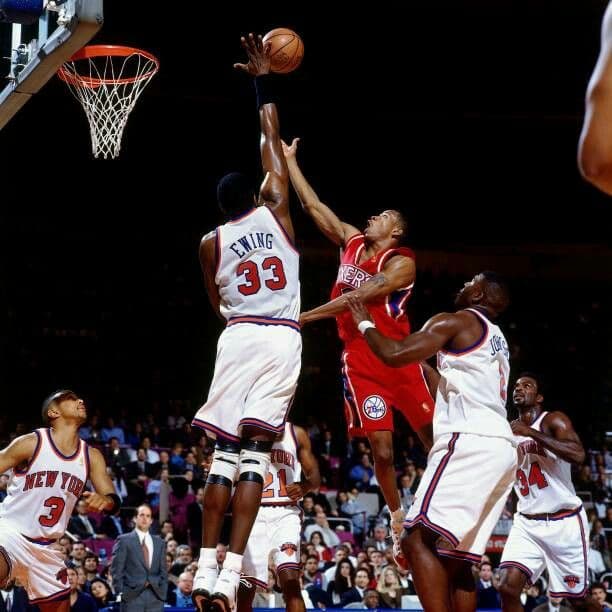Modern technology has changed basketball, one of the most entertaining and energetic sports. From coaching and game analysis to enhanced player safety and spectator involvement, innovation has permeated every facet of the game. This piece examines the ways in which technology is changing basketball and what this implies for the game’s future.
Technology in training
Basketball players can now train in virtual reality (VR), which expands their training and skill-building opportunities. VR systems can simulate various game situations, allowing players to experience real game conditions without the need for physical contact or risk of injury. For example, players can work on improving their reactions to opposing defensive schemes or developing the ability to make quick decisions in dynamic game situations. This also includes the ability to train in a virtual space with simulated opponents to improve game understanding and strategic thinking.
Through the ability to view extra information directly during drills, augmented reality (AR) provides participants with a novel approach to engage with the training process. This can include visualization of optimal shot trajectories, on-court positioning instructions, or even simulated opponent movement. The use of AR in training helps to improve technique and strategy, making the learning process more interactive and effective.
Analytics and condition monitoring
Modern motion tracking systems and wearable devices play a key role in monitoring players’ physical condition and adapting training loads. These technologies allow coaches and medical professionals to get instant feedback on heart rate, speed, fatigue levels and other important physiological parameters. This, in turn, makes it possible to adjust the training process in such a way as to minimize the risk of injury and optimize players’ recovery.
Basketball is hardly an exception to the transformative impact big data analytics is playing in sports. By collecting and analyzing voluminous data on player performance during practices and matches, coaching staffs can uncover hidden trends and patterns that were not evident with traditional analysis methods. This includes identifying optimal playing strategies, improving tactical decisions, and customizing training plans to enhance players’ strengths and work through weaknesses. As a result, teams can improve their competitiveness based on objective data, not just subjective assessments.
Innovations in game analysis
Basketball in the current era has become significantly more reliant on automated video analysis, which gives coaches and analysts a valuable tool for in-depth understanding of game mechanics. Thanks to advanced machine learning and computer vision algorithms, these systems are able to automatically identify key moments in a game, analyze player behavior and evaluate the effectiveness of strategies used. This approach allows coaching staff to highlight and analyze both successes and mistakes in detail, without wasting valuable time manually reviewing hours of footage. Furthermore, automated video analysis facilitates the comparison of team and player performance in various scenarios and matches, offering insightful information for changing strategies and getting ready for next games.
Coaches and players now have more opportunity to understand and enhance game processes thanks to sophisticated statistics-rich modern game analysis tools. Beyond traditional statistics such as points or rebounds, these systems offer detailed metrics including player movement speed, shooting efficiency from different zones, the level of interaction between players and more. This in-depth analysis helps identify not only individual but also team tendencies, facilitating more accurate planning of drills and strategies for the game. In addition, access to such statistics allows players to be more aware of their training and play, identifying aspects that need more work and helping them develop their skills more quickly and effectively.
Improving player safety through innovative technologies
Wearable devices play an important role in keeping athletes safe and healthy:
- Heart rate and blood oxygen sensors help you track key health indicators in real time.
- Sleep quality and body temperature monitoring provide information to optimize recovery and prevent overexertion.
- Adaptive training modes based on individualized data help prevent injuries.
- Alert functions are activated in the event of abnormal performance, allowing you to react in time to prevent serious illness or injury.
The development of smart materials for sports equipment and footwear significantly improves player safety:
- Shoes with adaptive soles change stiffness depending on the type of activity, providing support when jumping and flexibility when running.
- Materials with increased cushioning reduce stress on joints and muscles, preventing injuries.
- Equipment with temperature management technology maintains optimal heat exchange, minimizing the risk of overheating or hypothermia.
- The lightweight and breathable fit prevents discomfort and skin irritation, allowing athletes to focus on the game.

Engaging with fans in a new era of technology
Fans’ interactions with their favourite teams and sportsmen are being revolutionised by technology, opening up new avenues for interaction and increasing levels of engagement:
- Mobile apps specifically designed for teams and leagues offer users comprehensive access to the latest news, match schedules, participant data, and exclusive video content. This creates a deeper and more personalized interaction with the team, available anytime, anywhere.
- Social media opens a direct channel of communication between athletes and their fans, allowing the latter to follow the lives and achievements of their idols. Live broadcasts, stories, posts and interactive Q&A sessions make fans part of the team’s daily life.
- Even while watching from home, virtual reality (VR) technology offers a distinctively immersive stadium experience. Thanks to these advancements, sports fans everywhere can now feel the complete thrill of attending a live game.
Modern arenas are becoming high-tech entertainment centers, offering fans unparalleled services and opportunities:
- Interactive displays placed throughout the stadium allow fans to follow the game from multiple angles, receive additional information about teams and players, and participate in a variety of interactive entertainment during halftime.
- Real-time systems for ordering food and beverages from a seat in the auditorium greatly enhance the stadium experience, allowing fans to not miss a minute of the game. With mobile apps, it’s possible to not only place an order, but also pay for it and then be notified when it’s ready without waiting in line.
- Wi-Fi-enabled arenas encourage real-time experience sharing among attendees, which boosts social interaction and fan participation.
Conclusion
Basketball participant training and competition are being drastically altered by technology, but basketball fans are also benefiting from this change as basketball becomes more approachable and engaging. We can anticipate more improvements that will influence the direction of this fascinating sport as long as technology keeps advancing.
